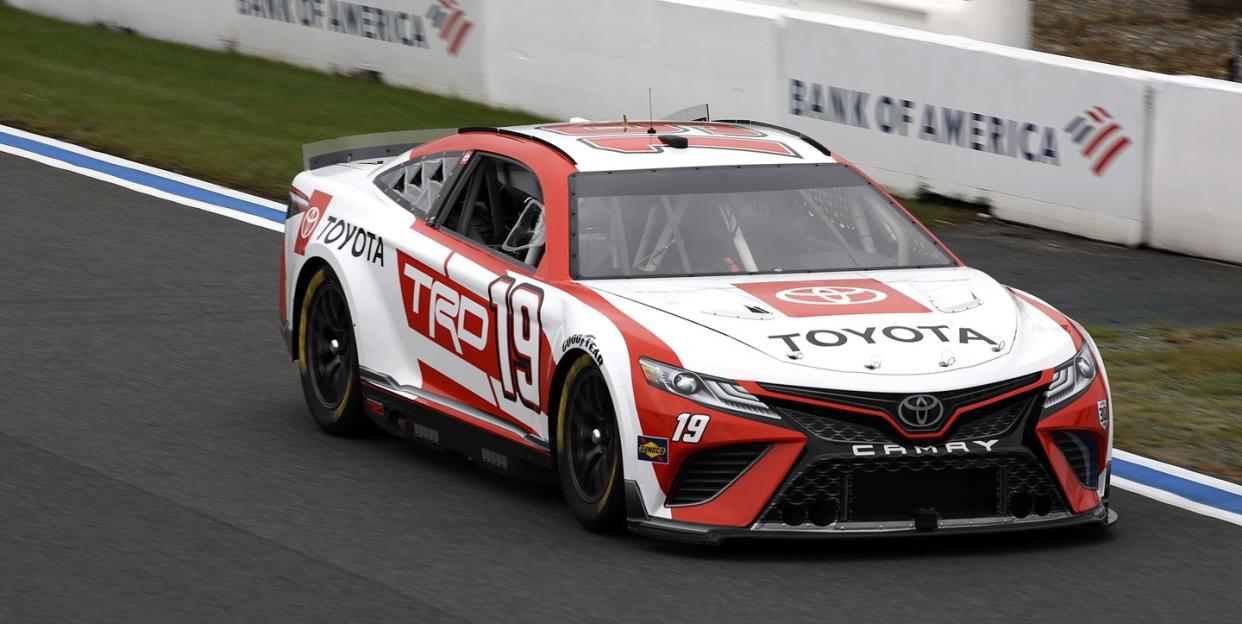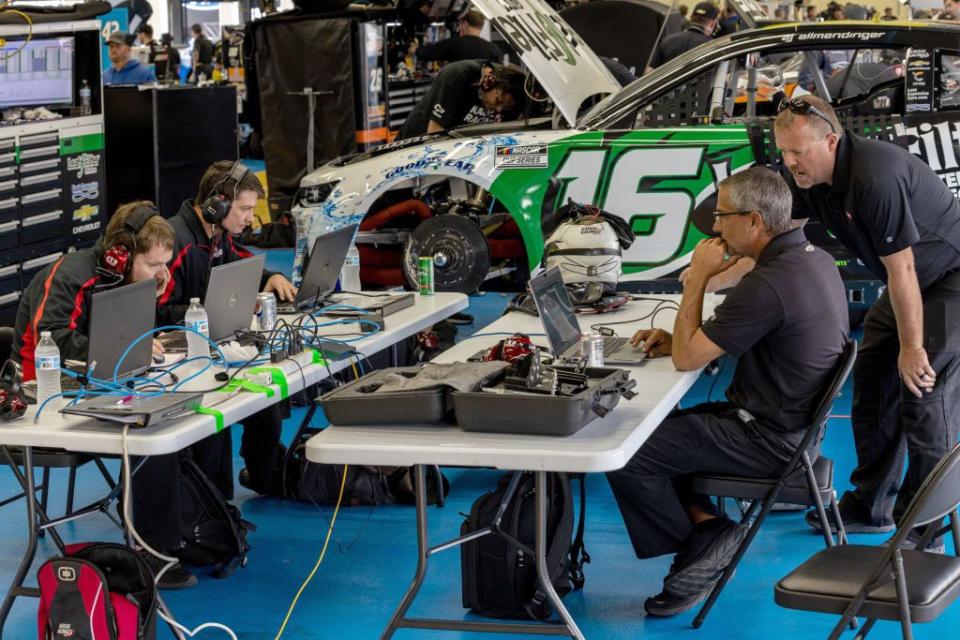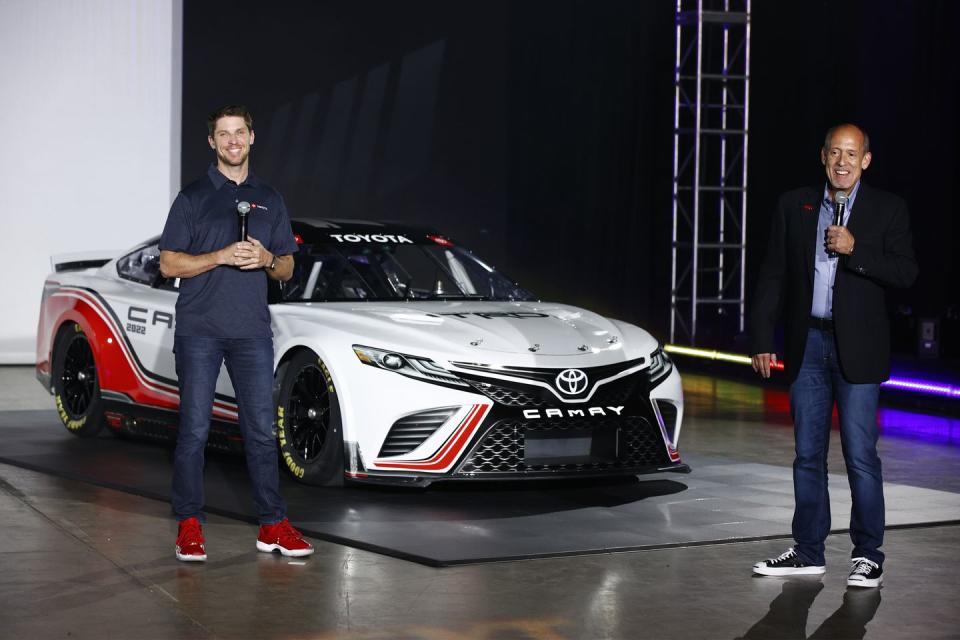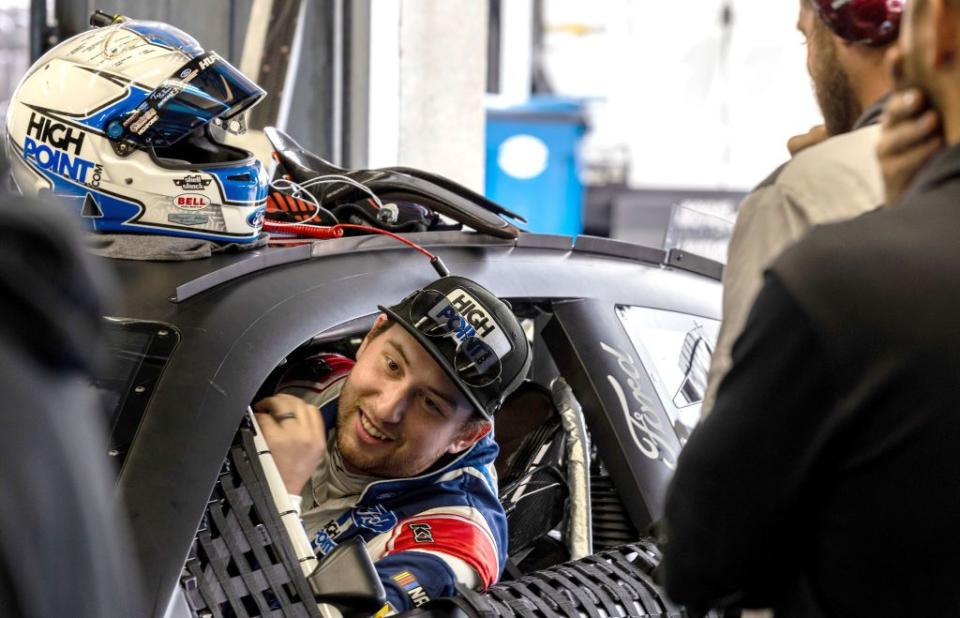Larry McReynolds: NASCAR 'Has Only One Shot' to Get Next Gen Car Right

- Oops!Something went wrong.Please try again later.
- Oops!Something went wrong.Please try again later.
The NASCAR Next Gen car is scheduled to debut Feb. 6 at the Los Angeles Memorial Coliseum in the non-points Clash before making its point debut at the Feb. 20 Daytona 500.
The new car, technically the seventh version of the Cup race car since the series debuted in 1949 as the Strictly Stock division, will have a composite body, a move away from the sheet metal that has defined NASCAR’s top-level racer.
One of the goals of the new car, from the NASCAR approach, is to emphasize driver control and under-car setup as opposed to aerodynamic changes on the surface of the vehicle.
As top NASCAR Cup teams race toward a championship in the closing weeks of the season, several key players from each organization have one eye on the 2022 calendar.
This is true in every season but particularly so in this particular autumn. The reason is the rapidly approaching arrival of the so-called Next Gen car, the latest version of the vehicle that Cup competitors will race from coast to coast. The car is scheduled to debut Feb. 6 at the Los Angeles Memorial Coliseum in the non-points Clash before rolling onto the high banking at Daytona International Speedway for the Feb. 20 Daytona 500.
Between now and then, the car, one of the most dramatic departures from the norm in the history of the Cup series, will be a focal point for every team, even as several of them chase a 2021 championship.
Parts and pieces for the new car began arriving in Cup shops during the summer, triggering the movement of some team members to shop areas that will concentrate on wringing speed from this new animal.
Chris Gabehart, crew chief for Denny Hamlin, compares it to consuming a large elephant. Bring all utensils and settle in for a long meal.
“The bigger teams have a group of development people, whether it be mechanics, engineers, aero guys, who are solely focused on that,” he said. “It is such a large undertaking, not only from just the new-car aspect but literally how you’re going to work on them, how you’re going to set them up and what tools you physically need to work on them. It is a massive, massive undertaking, so we have a team of personnel who have been focused on that for months. As it gets closer, all of us are starting to pay more attention to it.”

The new car, technically the seventh version of the Cup race car since the series debuted in 1949 as the Strictly Stock division, will have a composite body, a move away from the sheet metal that has defined NASCAR’s top-level racer. And there are many other changes. Some say the only things that will stay the same in the new car are the driver, the driver’s seat and perhaps the steering wheel.
“I don’t think there’s been a change in any of our careers that compares to this one,” said Travis Geisler, Team Penske’s competition director. “There’s almost nothing about it that’s not different from what we’ve always done. It’s a pretty large departure in car technology, parts and pieces and the philosophy of the car itself. The assembly process is very different from now when we start with raw steel and end up with a race car.”
Toyota Racing Development president David Wilson called the switch to the new car “a revolutionary step for our sport. We’re going to be taking a product to the race track here in a few months that for all of us is still so new. We’re going to be collectively drinking through a fire hose trying to learn and trying to understand what it is we’re dealing with.
“We’re going to be working on the airplane while we’re flying it. That’s a little terrifying, to be honest.”

Lessening the anxiety is the fact that select groups from the leading teams will be working almost exclusively on the new car while their teammates try to win races and the championship for 2021.
“The big teams have so much depth that I think they can take a group of people and somebody to oversee it and put them over in that corner and say, ‘That’s your project,’ ” said Fox Sports motorsports analyst Larry McReynolds. “The race team has to stay focused on the rest of the schedule. When the checkered flag waves in Phoenix, then it’s a whole new story.”
Geisler, a veteran lieutenant in the Penske organization, described its approach as “putting a sort of expeditionary force to focus their thoughts and process on getting the new car ready. There’s some crossover where we’re trying to make sure everybody’s up to speed on where we’re going and the process, but the race team guys will stay pretty focused on the task at hand until the end of the year.”

NBC Sports motorsports analyst Steve Letarte said teams have divided their work forces. “You want to try not to distract the current situation but to pay attention to the other,” he said. “One of the big changes is going to be how the teams get parts and pieces. It’s sort of a step back in time to when everybody bought the majority of their components. It’s going to be a different mindset where teams purchase parts and manage inventory from other suppliers.”
One of the goals of the new car, from the NASCAR approach, is to emphasize driver control and under-car setup as opposed to aerodynamic changes on the surface of the vehicle. A key in that area will be an underwing (also called undertray or underfloor) beneath the car. It’s a carbon piece that stretches from front to rear.
“The underfloor is there to address the area where we spend millions of dollars working on the way air passes underneath the car,” Wilson said. “We spend more time with the current car underneath the car than on top of the car because the shape of your exhaust and every component that touches the air impacts the performance of that car aerodynamically. The floor underneath will mitigate a lot of that focus and the money that we put into it.”
Of course, as Wilson points out, even with parts and pieces supplied by outside vendors, there will be no letup in teams’ efforts to wring more speed from every part of the car.
“The parts and pieces are largely off the shelf and they can’t be changed, but invariably somebody is going to try,” he said. “This is just what happens. There still is some adjustability from a setup perspective that’s built into the cars. The underfloor is a not inexpensive piece, and there is going to be wear and tear that happens to that. Teams will look at these kinds of things as opportunities. It’s just how we all operate.”
Gabehart agrees. “We’ve never had the undertray,” he said. “Learning the nuances of that and how it behaves will be a big focal point.”
It’s likely that teams’ Next Gen prep teams already are refining their approaches to that area.

“In my opinion, people win races, not parts,” Gabehart said. “The best teams have the best people. The pieces will change, but, at the end of the day, the parts and pieces just lay on the floor until the people put them together.”
McReynolds, who has assembled a large folder of information on the new car in preparation for early-season broadcasts next year, expects there to be a significant amount of “fudge room” on the vehicle despite set pieces.
“It looks like there is a lot of tuning on the car, more than I thought,” he said. “It’s almost scary. There’s a lot of stuff to adjust on. The adjustments you can make with the angle of the rear suspension and in other places is a heck of a lot more than you can adjust in a 40-minute practice.”
It’s likely that the new car will undergo changes as teams continue to work with it over the upcoming months and NASCAR tests its qualities on tracks. The car’s high-pressure debut will be on a track drivers have never seen and in an event that won’t count in points – the Feb. 6 Clash on a “manufactured” flat track at the Los Angeles Coliseum.

“About the only thing that will tell us is to give us some indication as to the durability of the bodies,” Wilson said. “But I don’t think the cars will be fast enough there to do any serious damage. Still, we’ll learn something about the bodies and components.”
Los Angeles isn’t the best of proving grounds, but McReynolds said it will “beat the hell out of nothing. We’ll at least have 20 to 22 cars on a race track racing for a trophy and a prize, which is when you show your hand. Is it the optimum? Probably not.”
Numerous drivers have tested the car, but it remains largely a mystery.
“We’ve all sat in the car and tried to get comfortable in our seats,” Chase Elliott said. “Your visuals are very different sitting in it. Inside the car there are a lot of differences. The dash is kind of awkward and in a bad location. You can’t really see the (dash) screen in its current location.
“I think there are some small things we’re going to have to tweak over time. The pedals are mounted to the floor instead of hanging, which can give you a different feel.”
NASCAR and its teams have invested a lot of time and money in the new car, the development of which is another step along the road to a racing future that likely includes electrification. This change will be an important one as the sport continues to deal with the impact of the pandemic and as it explores racing in new venues and with new concepts.
“This thing has to work,” McReynolds said. “If it doesn’t, I don’t know. In my book, we only get one shot to get it right.”

